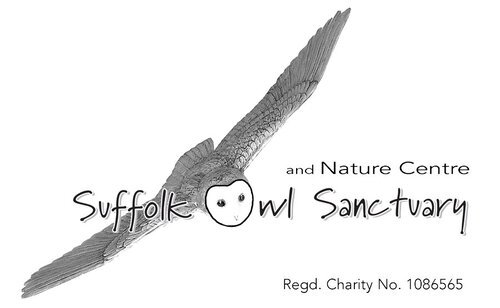Towards the end of 2021, with Avian Influenza cases increasing around the UK, we heard a rumour of new guidelines regarding the care and welfare of birds of prey. Our own Avian Specialist Consultant Vet, Dr Elliott Simpson-Brown, MRCVS, was on the panel advising DEFRA on updating the best practice for collections that keep birds of prey. These included diet, accommodation, healthcare and training, with a much greater emphasis on reducing stress and improving bird wellbeing.
As a result of these upcoming changes, we built new aviaries to allow us to free-loft our Flying Team and reduce the use of tethering.
We also made the decision to stop transporting our birds for off-site visits. There were many reasons for this, including not wanting to tether birds into their travel boxes, not being able to control the environment we were taking the birds into, and with most of our School Owls nearing retirement, we didn’t see it as fair to train young birds for this practice.
Our Education Officer, Susan, set about developing new activities to ensure that schools could still book an engaging and interactive educational visit from our team. This included our popular Pellet Detectives session, Food Chains Game, Habitats Packing Activity and many more.
In 2021, our Education team made several local outreach visits with our birds, but this changed in January 2022.
Susan notes “between starting at SOS in 2020 and the end of 2021 when we stopped taking birds into schools, we obviously didn’t have that many bookings due to Covid. However, it has been really noticeable that the feedback we’ve received since then has helped to support the findings of several research papers into the use of Ambassador Animals for Conservation Education.”
The use of animals to aid and support education has long been considered the done thing, with Zoos expected to attend schools and community events with a small menagerie for students and visitors to enjoy meeting, stroking or holding. However, more collections have now moved away from using vertebrates (most commonly birds, mammals, reptiles) as ambassador animals, in line with increased awareness of animal welfare and wellbeing. With captive animals always in the spotlight from those who believe all animals should be free, we face higher scrutiny than ever. We have always put our birds first, but for the reasons stated above, we could not always guarantee that they would not face some stress or risks during these off site visits.
Our new outreach visits include interactive presentations, games and activities to help students learn.
Over the past few years, a number of studies have been carried out on the use of ambassador animals for education, and of most interest to Susan is that pupils retain information better when there isn’t an animal present. “When we used to visit schools with the birds, the feedback would be “the children loved seeing the owl”, whereas feedback now tends to concentrate on what activities the children did, or what facts they learned.”
Research into this is still very sparse, with very few studies concentrating on formal education (pre-booked workshops delivered to schools and groups) and utilising control groups. This is something that many agree needs to be addressed, and it is hoped that as a result of recent publications, it may lead to more research into this field.
If you are a student with an interest in carrying out research such as this, please contact our Education Team on education@owlhelp.org.uk
We would like to thank Tarryn Basden for supplying us with her Literature Review on this topic, which led us to the following references for further information:
Baird, B. A. (2018). Ambassador Animal Welfare: Using Behavioral and Physiological Indicators to Assess the Well-Being of Animals Used for Education Programs in Zoos [Ph.D., Case Western Reserve University]. https://www.proquest.com/docview/2427501023/abstract/2D47E9A606474E9APQ/1
Clifford-Clarke, M. M., Whitehouse-Tedd, K., & Ellis, C. F. (2021). Conservation Education Impacts of Animal Ambassadors in Zoos. Journal of Zoological and Botanical Gardens, 3(1), 1–18. https://doi.org/10.3390/jzbg3010001
Mori, B. de, Ferrante, L., Florio, D., Macchi, E., Pollastri, I., & Normando, S. (2019). A Protocol for the Ethical Assessment of Wild Animal-Visitor Interactions (AVIP) Evaluating Animal Welfare, Education, and Conservation Outcomes. Animals: An Open Access Journal from MDPI, 9(8), E487. https://doi.org/10.3390/ani9080487
Moss, A., & Esson, M. (2013). The Educational Claims of Zoos: Where Do We Go from Here? Zoo Biology, 32(1), 13–18. https://doi.org/10.1002/zoo.21025
Priestley, C., Jaensch, S., & McLeod, E. M. (2023). Evaluating the effectiveness of welfare-focused animal encounters to deliver education programs. International Zoo Educators Association Journal, 59, 69–76.
Spooner, S. L., Farnworth, M. J., Ward, S. J., & Whitehouse-Tedd, K. M. (2021). Conservation Education: Are Zoo Animals Effective Ambassadors and Is There Any Cost to Their Welfare? Journal of Zoological and Botanical Gardens, 2(1), 41. https://doi.org/10.3390/jzbg2010004


